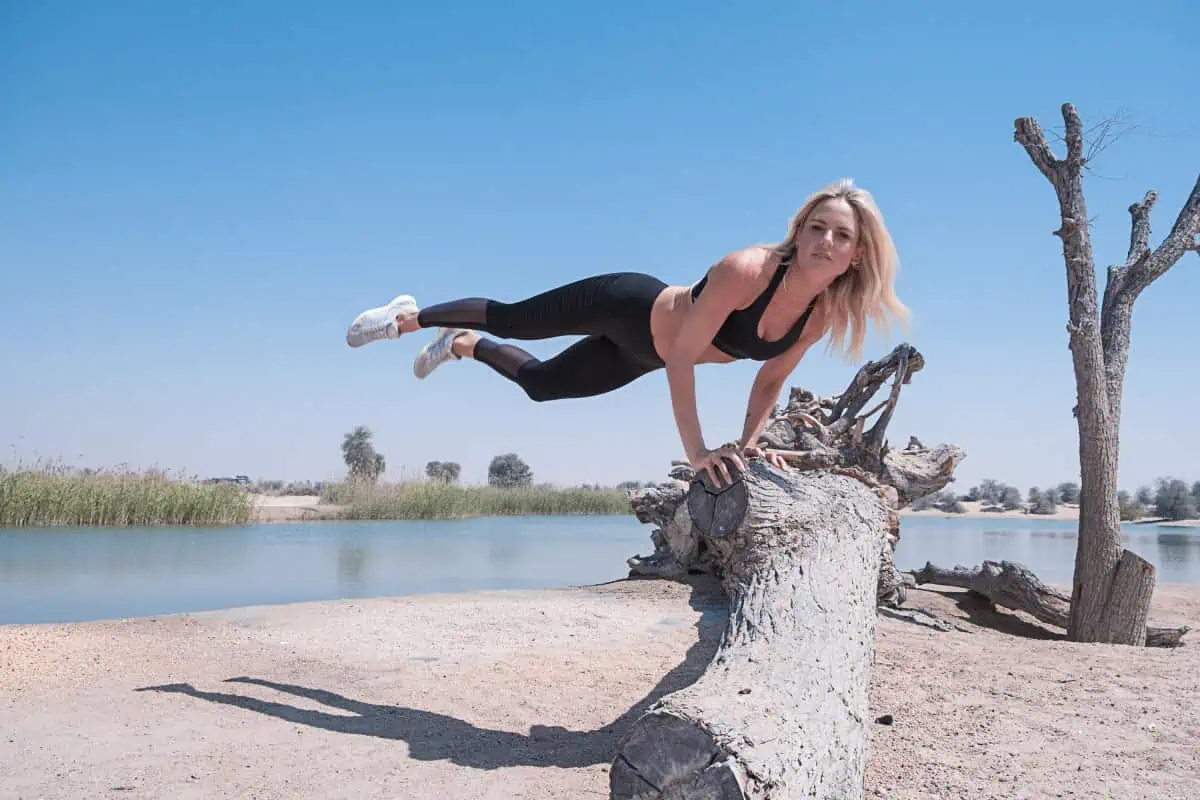Key Takeaway
Master arm balance poses with patience and daily practice to enhance upper body strength, core stability, and mental resilience, while enjoying the exhilarating sensation of ‘flying’ in your yoga journey.
Itching to get your feet off the ground and float up into an arm balance pose? We know the feeling! That’s why we have created this guide for you to build up your balancing poses, strength, and endurance so that you can level up your yoga practice! Plus, you can have fun getting into inversions at every level!
By warming up, and moving through some important preliminary yoga poses, you will be building yourself up to strong and challenging arm balances in no time. The key is patience and commitment to your daily practice. The more you focus on building strength in your body and mind, the more fun you will have with your feet off the ground.
Contents
What are yoga arm balances?
Arm balances are yoga poses where most of your body weight is distributed through the upper arms, hands, wrists, and shoulders. Although the focus is on ‘arm’ balance yoga poses, you must know it takes entire body strength, balance, and precision to master the more challenging arm balances. Holistic training and a range of yoga asanas are the keys to building up your balance practice!
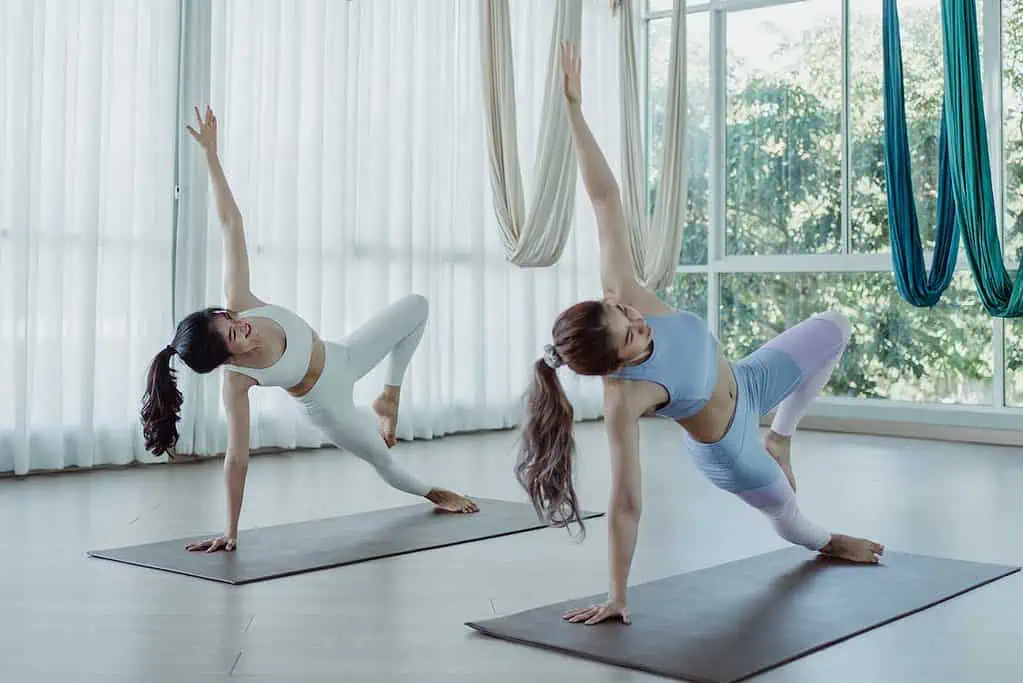
Benefits of Yoga Arm Balances
A few of the benefits of arm balances include:
- Extra strength in the upper body
- Toned muscles in the arm and increased core strength
- Better strength means better alignment in your yoga asanas
- Overcoming mental challenges and building resilience in the mind
- Remembering the importance of getting back up after a fall
- It feels good to fly!
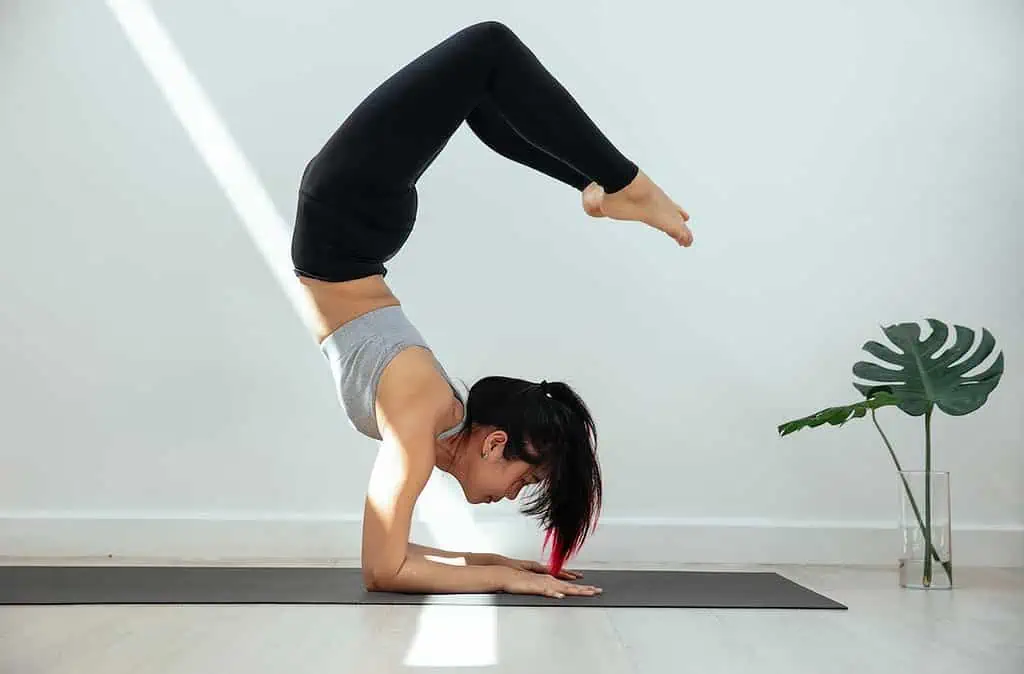
Safety Issues around Arm Balance Poses
When you bring your weight forward to the upper body, you will notice an intense shift and perhaps strain on the shoulders, arms, and wrists. There are tiny little muscles in your hands that don’t work as often as you think they might, but in arm balances, they suddenly become active, and you may hear them yelling out for help! This is a natural phenomenon when you begin arm-balance poses, and as your strength builds, you will feel this tension or pain less and less. But it is essential to know that, in the beginning, you should take it easy.
For safety reasons, if you have experienced any of the following conditions, please consult a doctor or physiotherapist before attempting arm balances:
- Previous broken bones or dislocations in the upper arms, wrists, or hands
- Spinal injuries (disk slips, too much compression, or existing pain)
- Injuries in the shoulders and arms
- High blood pressure or being prone to dizziness
- Pregnant women (unless they already have a very strong practice of yoga asanas)
- Women who are currently bleeding in their menstrual cycle
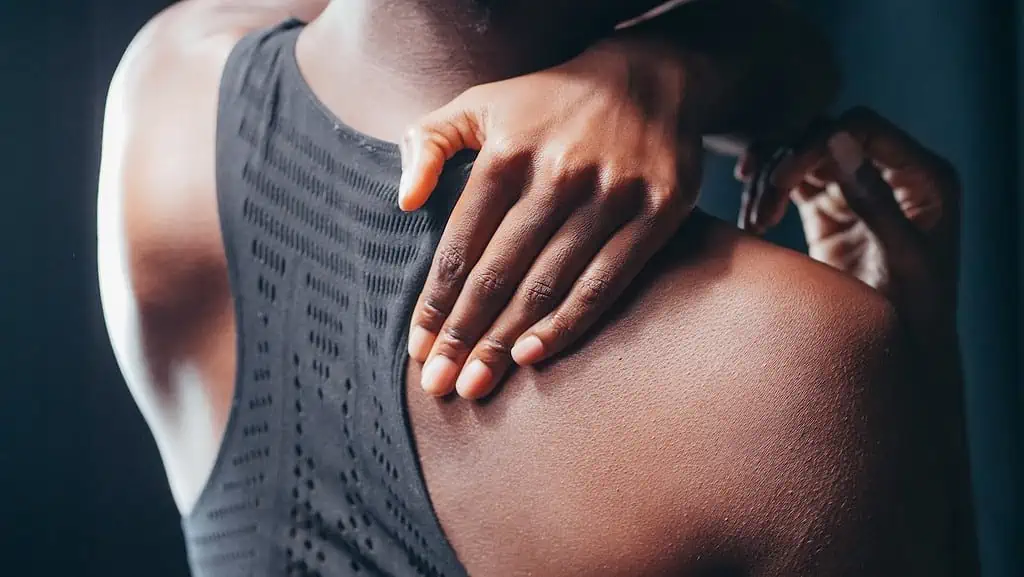
Preparing for Arm Balance Poses
Before you jump right in and lift your feet above your head, it is important to warm up the body to prevent injuries and also to improve your personal yoga practice.
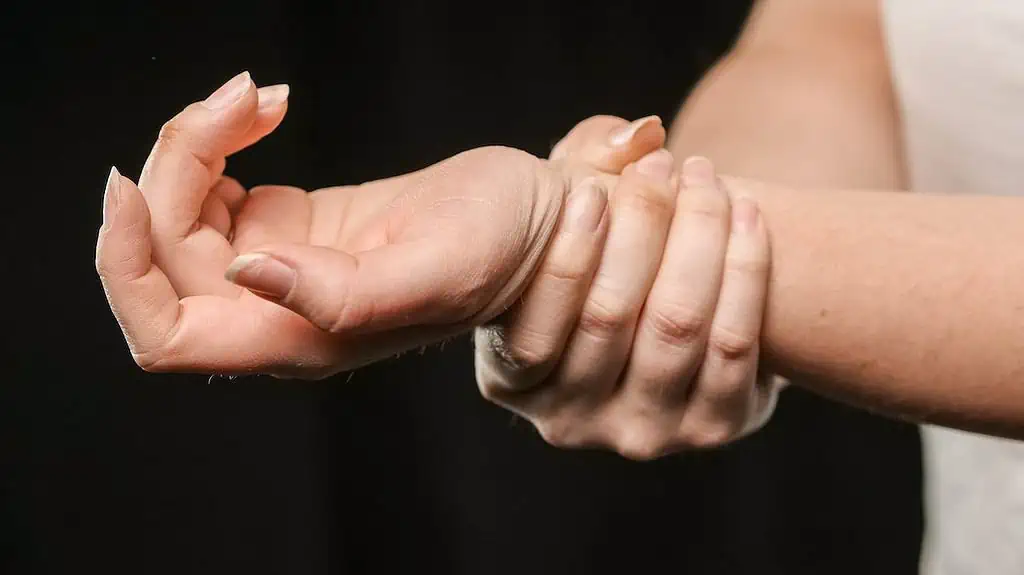
Warm up the Wrists
Take a few moments to warm up the wrists, as they feel it the most in arm balance poses!
To do this, you can create fists with your hands and draw a few circles in the air. You can also come into an ‘all-fours’ position (table top pose) and practice shifting your weight backward and forwards, in and out of the hands.
Here is a great wrist warm-up video to follow:
Warm up the rest of your body:
When your wrists feel ready to handle some body weight, start gently with a downward-facing dog position. Downward-facing dog is a great pose to practice shifting your weight into your hands. This can prepare your shoulders and build upper arm strength for when you are ready to float your feet off the ground.
In your downward-facing dog, make sure you press your fingertips into the floor. This small adjustment will activate the tiny muscles in all of your hands and protect the wrists from injury.
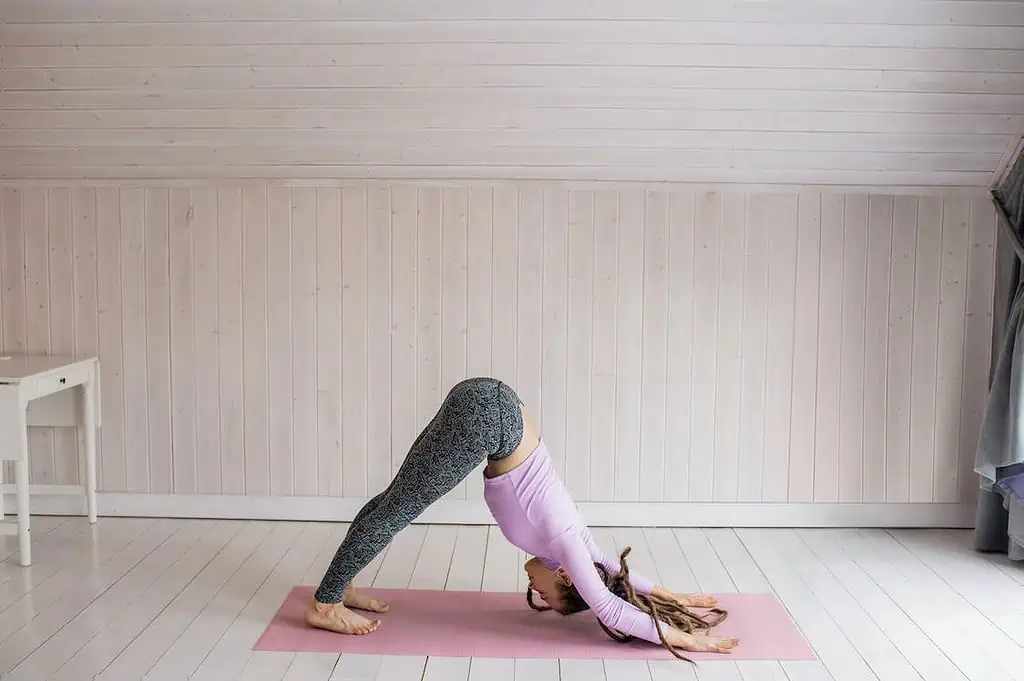
From your downward-facing dog, take your chest forward and align your shoulders over your wrists. This is a plank pose (Kumbhakasana). Holding your plank pose will build strength not only in the upper body but also in the core muscles, which are important for holding any kind of arm balance pose!
Make sure you are still breathing deeply as you hold this pose. Be active from the tips of your fingers to the tips of your toes, and every muscle in between!
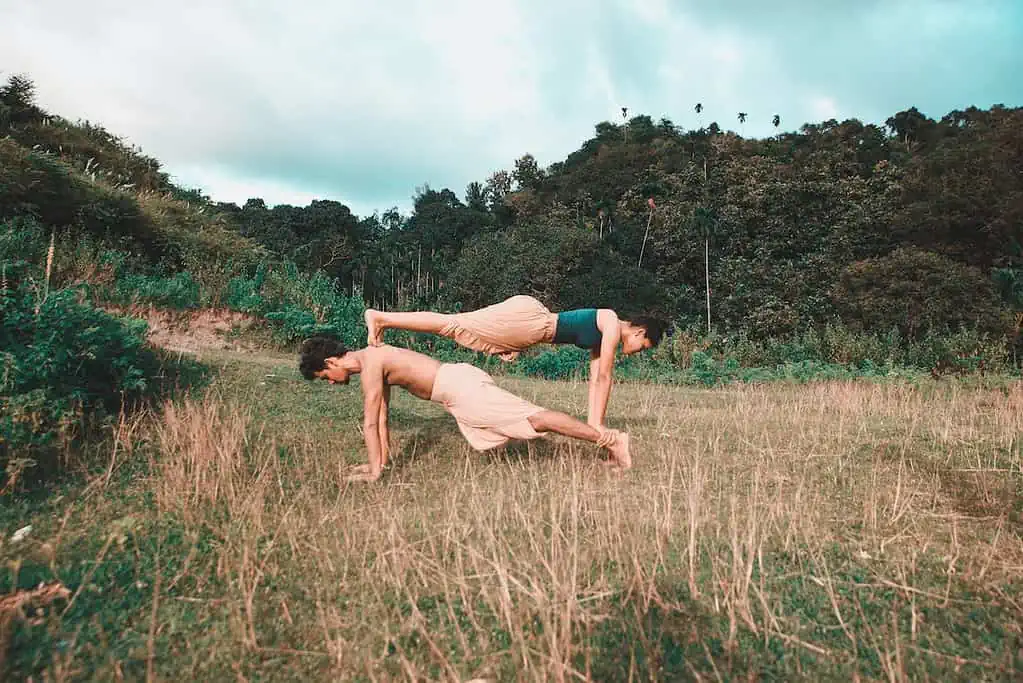
Challenge yourself!
When your body is warmed up and ready to go, it’s time to challenge yourself with some arm balancing!
To help you choose which arm balances are suitable for your yoga level, we have suggested a few poses and categorized them under beginner, moderate, or advanced arm-balance poses.
If you have mastered the one-arm balance pose, be sure to try and challenge yourself to progress to the next one. The more you practice, the more strength you will build.
Don’t forget to smile along the way!
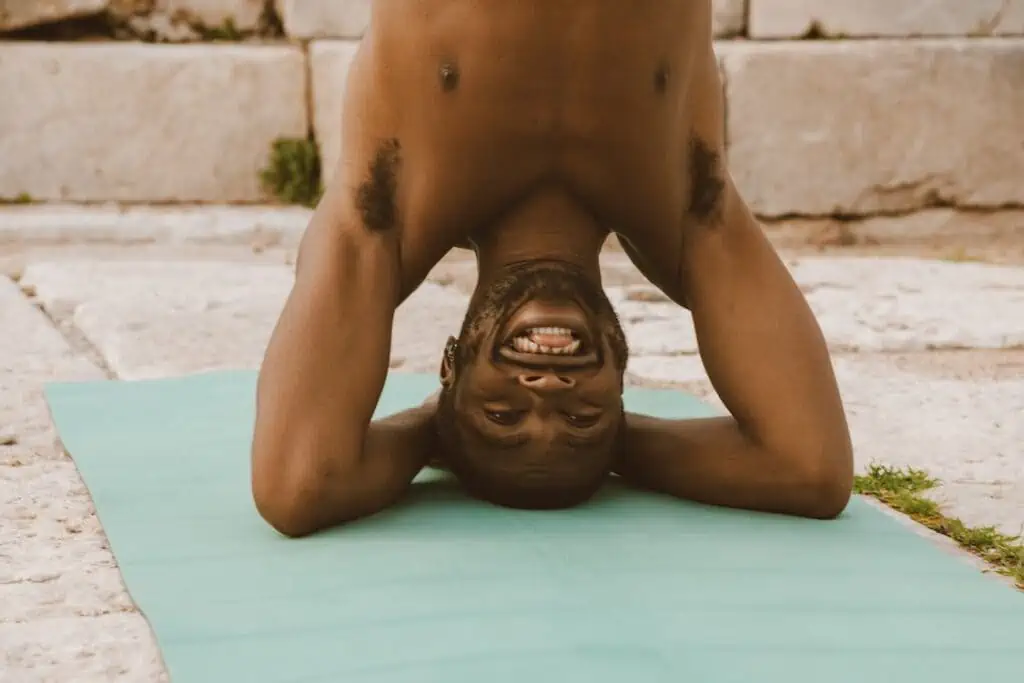
Beginner Level:
Chatarunga Dandasana (Four-limbed staff pose)
From your plank pose, keep your chest lifted, lean forward with your weight, and bend your elbows. Try to hug your elbows into your sides. Stay active in your hands as you hold this static position. It is a great preparation for a lot of arm balances. Hold for five to ten deep breaths, and then, with control, lower your entire body down onto the floor.
Take a rest in crocodile pose (laying face down on your yoga mat) if you need to let your muscles rest.
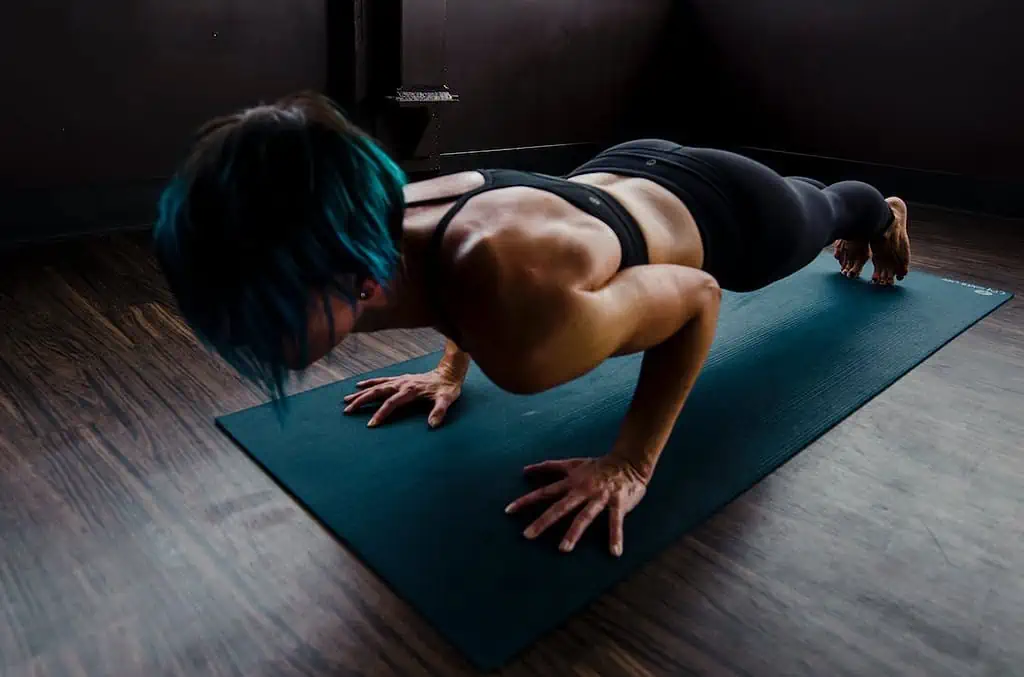
Upward plank pose (Purvottanasana)
For this pose, you will start in a seated position with your legs straight out in front of you. Place your hands next to your hips, keeping them shoulder-width distance apart and your fingers pointing towards your buttocks. Press into your hands, and lift your hips to the sky.
This is great for arm balancing practice as it strengthens the front of the shoulders and creates a stretch for the arm muscles too.
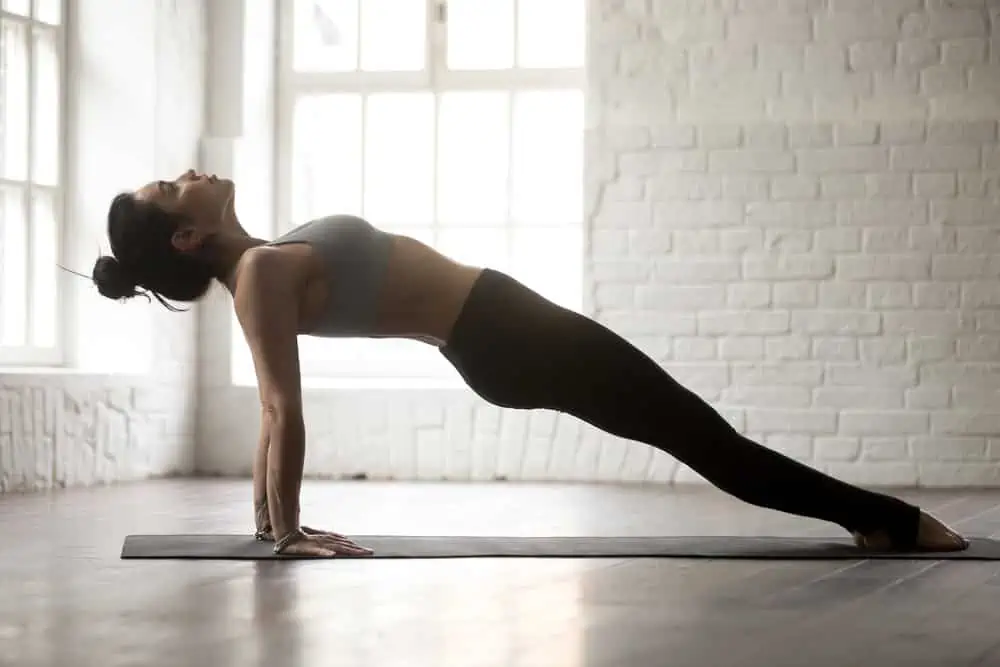
Moderate Level:
Moderate-level arm balances mean that it is time to take your feet off the floor!
Crow pose (Bakasana)
Crow pose is one of the most well-known yoga arm balances and is a part of many yoga classes. To do this pose, start in your yogi squat (malasana) with your hands on the floor in front of you. Lean forward to shift your body weight into your hands, activating your fingers and wrists. Begin to connect your knees to the back of your triceps and try to float your feet off the floor.
You can start by practicing with just one foot floating and gradually make your way to flying both feet at the same time.
Don’t forget to breathe and enjoy the balance while you are there!
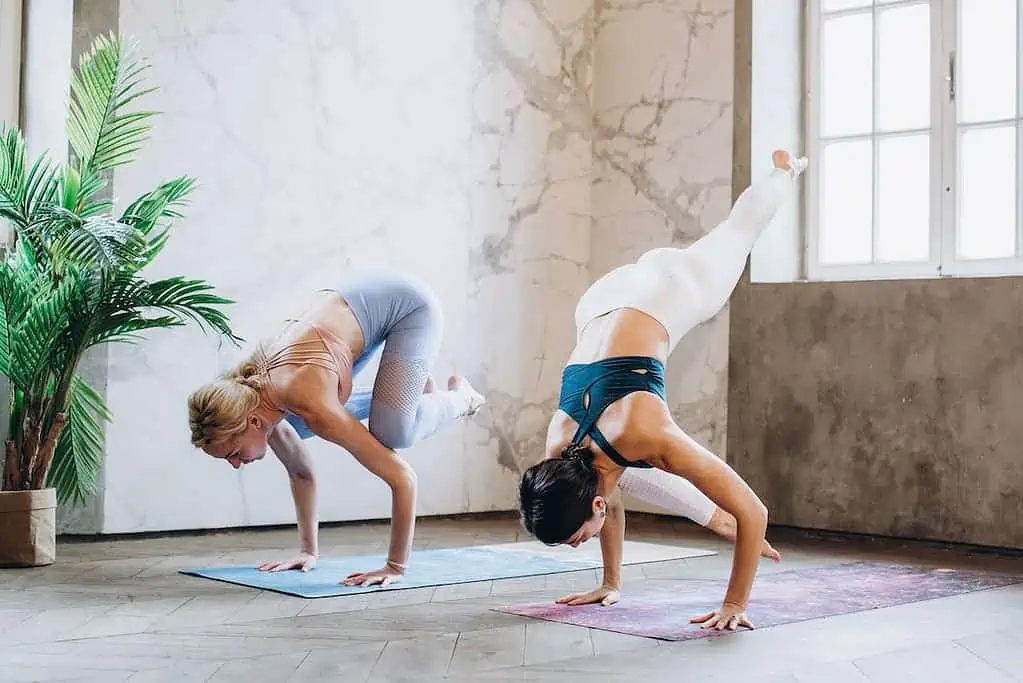
Crow Pose Variations:
From the crow pose, you can take one leg long behind you and reach it up to the sky. Practice with both sides to ensure you build equal strength!
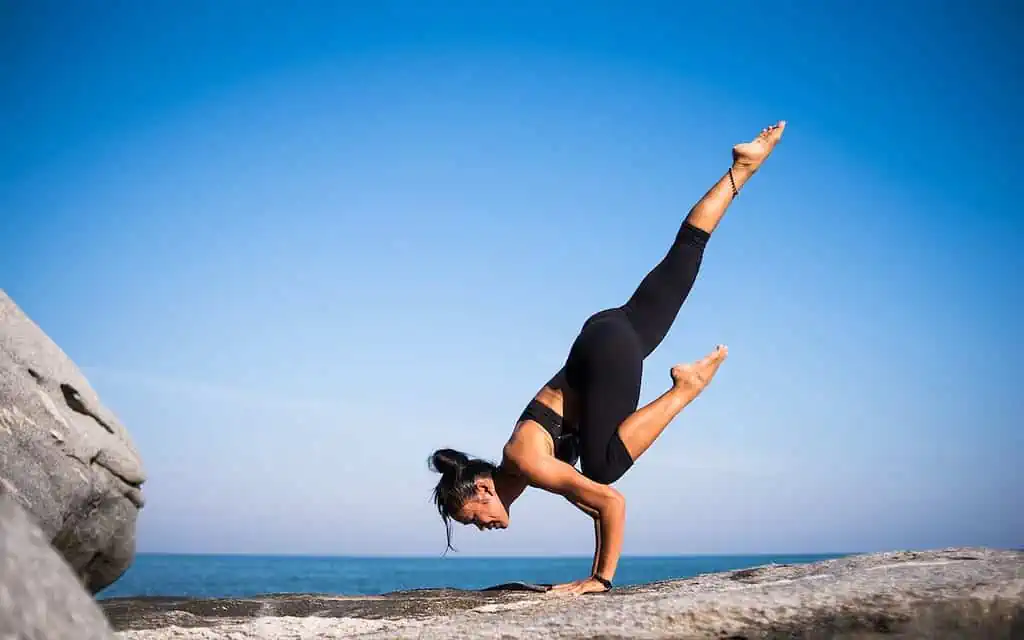
You can also try side crow (parsva bakasana) by placing the outer edge of your thigh on your forearms. The top leg will be squeezing in, active through the leg muscles, while the bottom leg stabilizes the balance pose.
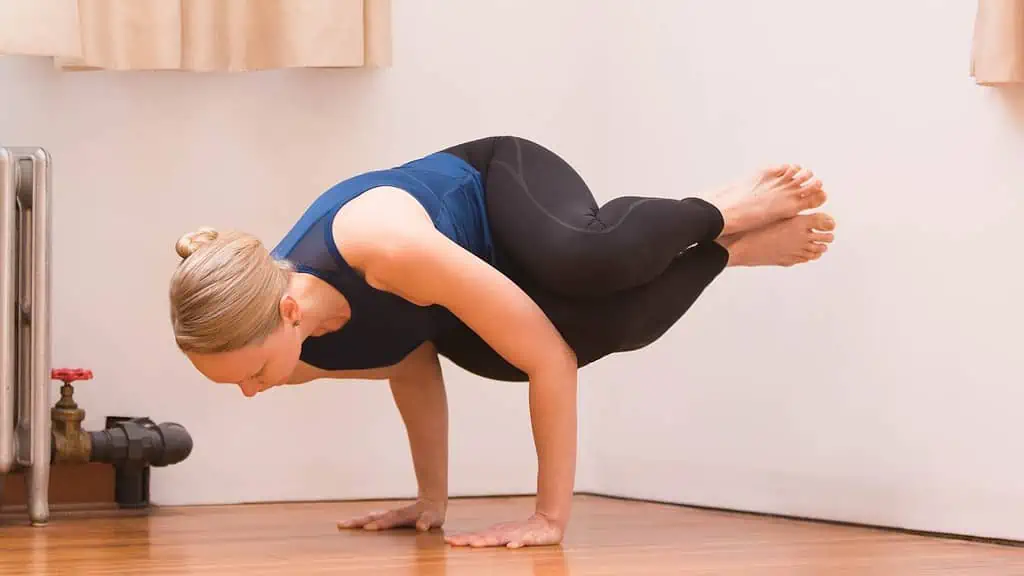
From the side crow pose, if you are up for a more challenging arm balance, try to go into a scissor leg side crow (eka pada koundinyasana II), also known as flying splits or even sometimes called hurdler’s pose!
It gets the name hurdler’s pose, as you will need to use the strength of your outer thigh to lift your leg off the floor and imagine that you are clearing a hurdle with your legs.
The scissor-leg side crow name comes from the obvious look of the scissor legs! Do this balance on both sides to ensure that your left leg has the same amount of strength as your right leg!
Do this pose by keeping your balance in your center by splitting your legs and counterbalancing yourself with your feet! This scissor-leg version of eka pada koundinyasana would be considered an advanced yoga arm balance.
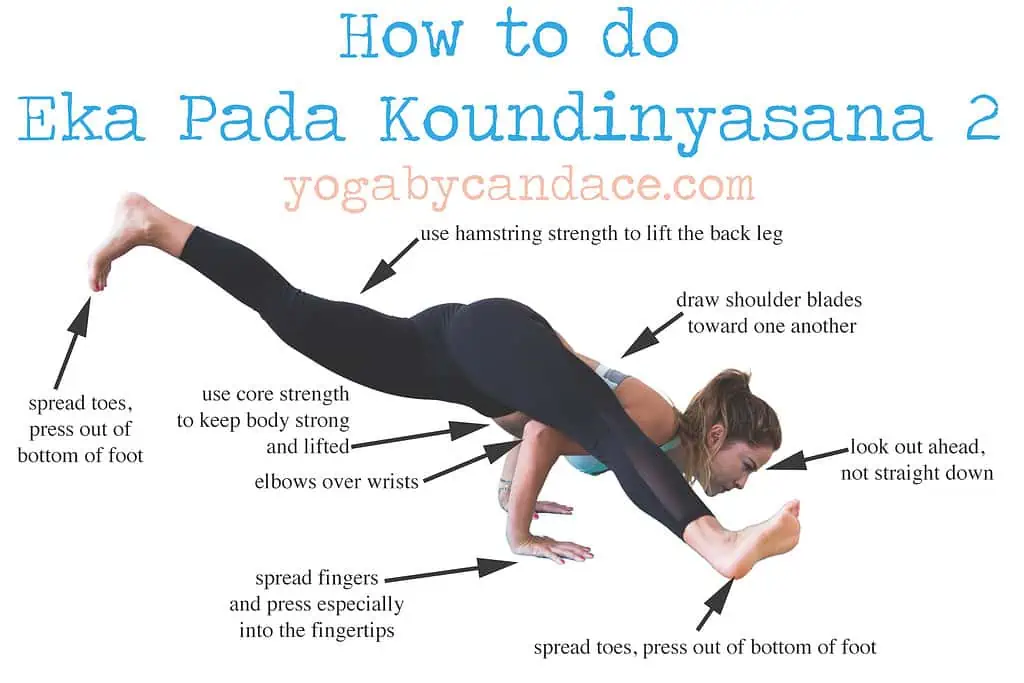
Firefly Pose (Tittibhasana)
Once you feel confident balancing in your crow, you can challenge yourself to extend your legs straight while floating your feet forward and come into a firefly pose!
This one is a stronger arm pressure pose, and you’ll have to squeeze your inner thighs actively against your upper arms to stay balanced here. The firefly pose will also help with your core strength!
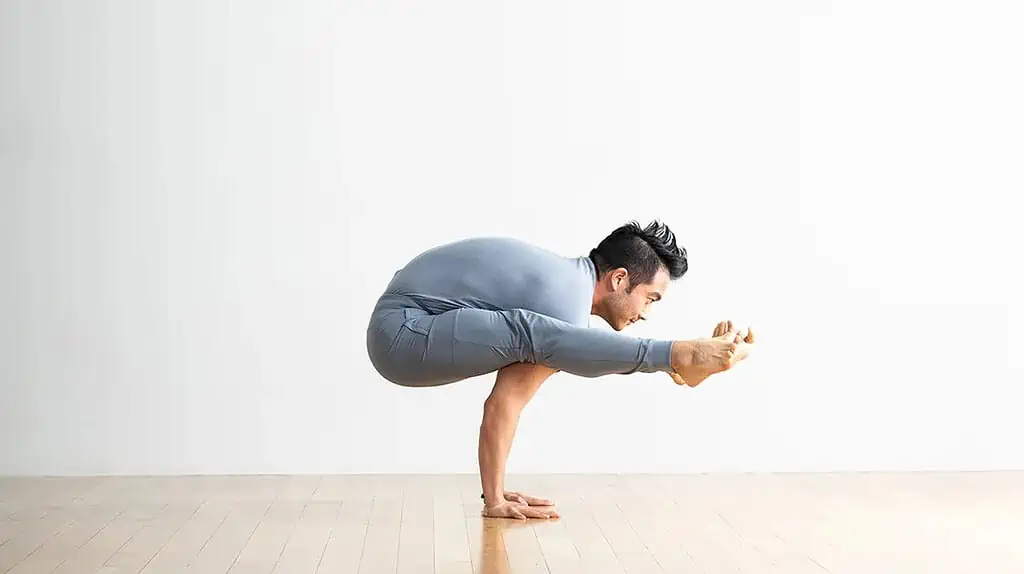
Another two moderate-level yoga arm balances to try are Scale Pose (Tolasana) and Side Plank (Vasisthasana). These poses will help you to build strength to level up your practice before moving on to the advanced balancing poses!
Advanced Level:
Astavakrasana (Eight angle pose)
The well-known yogi’s balance pose called eight angle pose (astavakrasana) calls for full body strength! It incorporates elements of lower body strength, forward fold with the chest, equal weight distribution between the right and left arm, as well as intertwining the left foot with the right foot to keep the legs together. The inner thighs squeeze the arms, and you’ll keep your head lifted to stay balanced in this challenging position.
For the eight-angle pose, you will slowly shift forward from a seated position into a balancing position. We recommend that you try this yoga pose with a yoga instructor in a class or studio so that they can help you safely move your weight forward and float your feet!
The eight-angle pose will help to build strength in your core, forearms, and legs too!
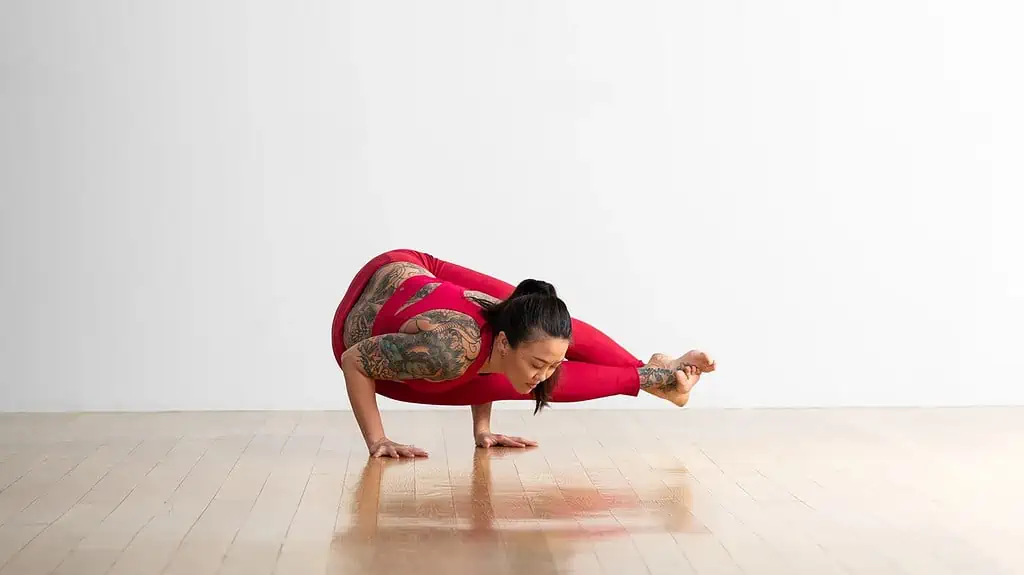
Forearm Stand (Pincha Mayurasana)
Another favorite for advanced yogis is the forearm stand. Begin this balance in dolphin pose, with your forearms connected to the ground. Make sure your feet are about two feet apart behind your elbows. As you begin to shift your weight forward, walk your feet in as close as possible until you come up to the tips of your toes. From here, begin to float, and rise the feet above your head!
Keep your core muscles engaged, and push through your hands and elbows to keep your body stable. Play around with different leg variations as you enjoy your flight time!
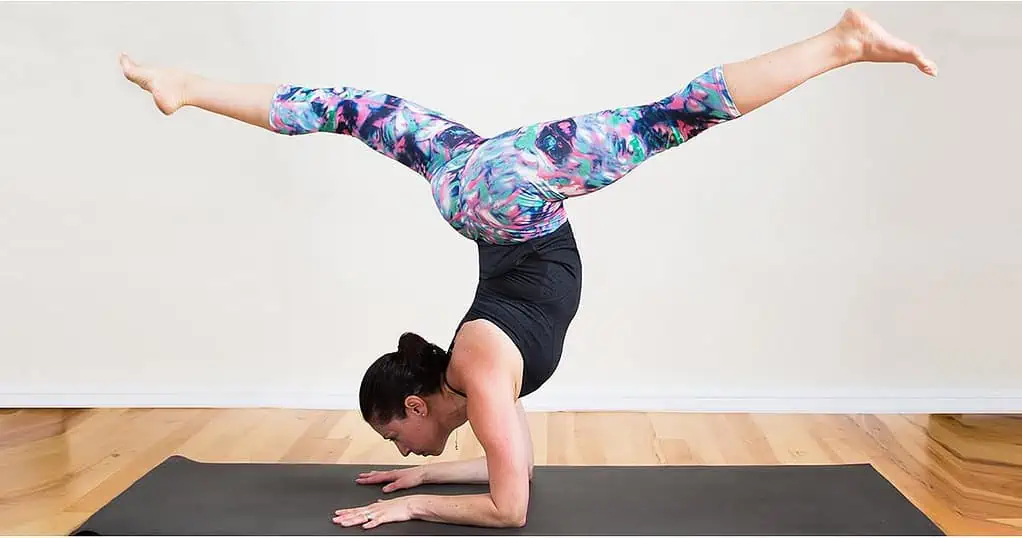
Peacock pose (Mayurasana)
You’ll have to be ready to move past some serious balance fears if you want to attempt the Peacock pose (Mayurasana). For the advanced yogis, you will bring your body into a straight line, look toward the top of your mat, and float your feet up high to the sky. Like a halfway lift, you want your spine to be straight, and your hands may either be shoulder-width apart or together in the center of your body.
Flare your tail feathers in the beauty and balance of this peacock pose! If you are still building up to the full variation, you can always practice lifting one leg at a time.
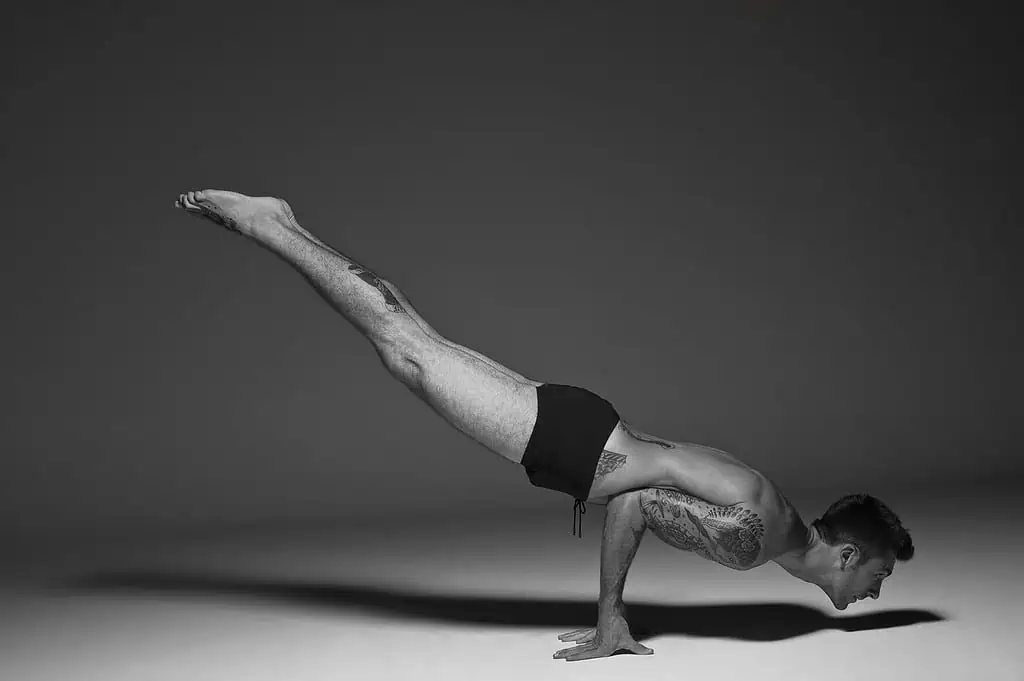
Stretch it out!
After all the core contractions, stretch out the front of your body with some restorative and counter poses.
For example, wheel pose and bow pose, help to stretch out through the front of the body and particularly the core muscles. This will allow your muscles to recover, refresh, and prepare for the next arm balance session you attempt!
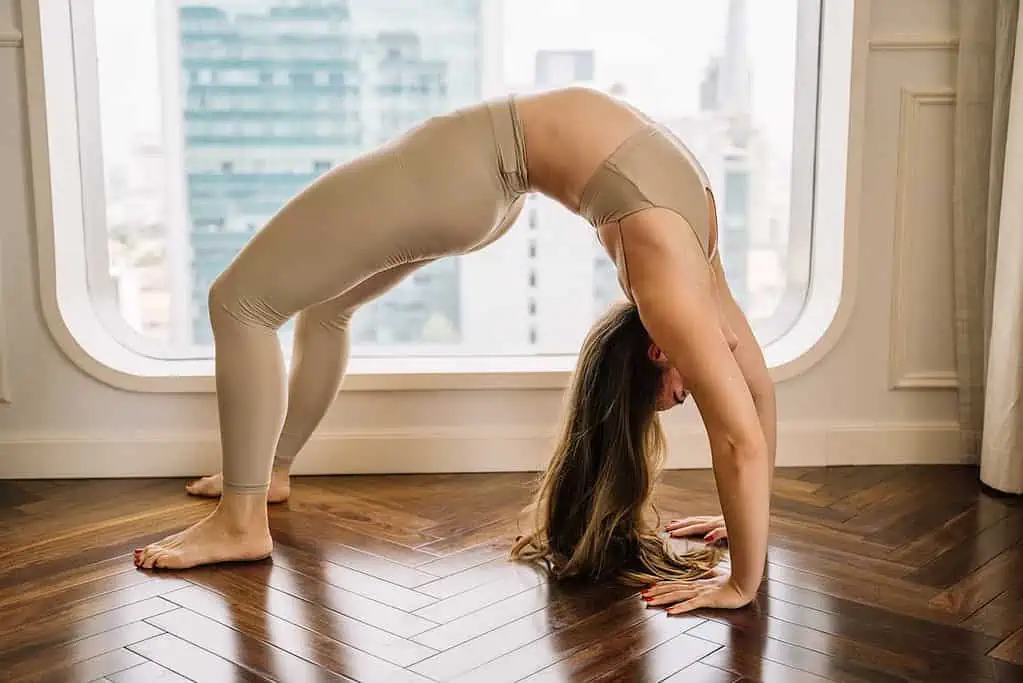
Frequently Asked Questions:
What are the main benefits of arm balances?
Arm balances help to build extra strength in the upper body leading to toned muscles in the arm and increased core strength. Better strength means better alignment in your yoga asanas while also overcoming mental challenges and building resilience in the mind. Yoga balances will remind you about the importance of getting back up after you fall. Plus, the main benefit is that it feels good to fly!
I’m a beginner! How can I start to learn arm balances?
Every yogi started as a beginner! Start building strength in your classes through long holds in downward dog, side plank or boat pose to build up your core strength and stability. With the help of a yoga teacher, yoga props, or even a wall to help you balance, you can start to play with some of the ‘easy’ level arm balances (check out the article above for how to do crow pose and some fun variations). As your practice grows, so will your confidence, and you’ll be playing around upside down in no time! Keep smiling through the journey and focusing on where you are in the present moment. The only person you should compare yourself to is the person you were yesterday.


